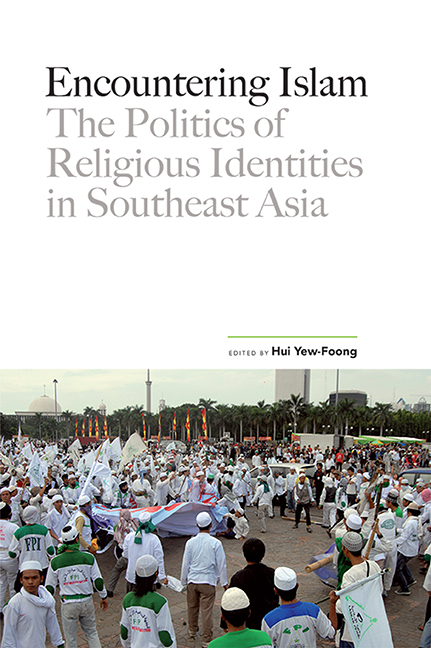Book contents
- Frontmatter
- Contents
- Acknowledgements
- Contributors
- Part I Introduction
- Part II Islam across Borders
- Part III Malaysia
- Part IV Indonesia
- Part V Muslim Minorities
- 11 Malay Muslims and the Thai-Buddhist State: Confrontation, Accommodation and Disengagement
- 12 Identifying with Fiction: The Art and Politics of Short Story Writing by Muslims in the Philippines
- 13 Issues on Islam and the Muslims in Singapore Post-9/11: An Analysis of the Dominant Perspective
- Index
13 - Issues on Islam and the Muslims in Singapore Post-9/11: An Analysis of the Dominant Perspective
from Part V - Muslim Minorities
Published online by Cambridge University Press: 21 October 2015
- Frontmatter
- Contents
- Acknowledgements
- Contributors
- Part I Introduction
- Part II Islam across Borders
- Part III Malaysia
- Part IV Indonesia
- Part V Muslim Minorities
- 11 Malay Muslims and the Thai-Buddhist State: Confrontation, Accommodation and Disengagement
- 12 Identifying with Fiction: The Art and Politics of Short Story Writing by Muslims in the Philippines
- 13 Issues on Islam and the Muslims in Singapore Post-9/11: An Analysis of the Dominant Perspective
- Index
Summary
The 11 September attack, the Bali bombings, and arrest of Jemaah Islamiyah (JI) operatives in Singapore reveal once again the centrality of ethnicity in Singapore's ideology of survival. Political discourse on these issues resurfaced concerns for the fragility of Singapore's ethnic relations and its vulnerability as a cohesive nation in which the Chinese comprise the majority (74.1 per cent), while the Malays (13.4 per cent), Indians (9.2 per cent) and a diverse array of other ethnic groups officially categorized as “Others” (3.3 per cent) constitute the minorities (Department of Statistics 2010, p. 3). While historical factors in the management of race relations have contributed to persistent concerns over the issue, Singapore's position as a small nation in the midst of two predominantly Malay/Muslim neighbours with entrenched communal politics vis-à-vis their more economically dominant Chinese populations has exacerbated it. The 9/11 attack and its aftermath may have also compounded the problem. Being the only country in the region that supported the U.S. invasion of Iraq, fear of terrorists’ reprisals could have induced the need to balance its foreign policy with ethnic relations management. Hence, while the discourse centring on the nation's vulnerability and the overriding emphasis on national cohesion is directed at all Singaporeans, it is the Malay community, 98.7 per cent of whom are Muslims (Department of Statistics 2011, p. 14), that has generally been the focus of attention.
The Malays’ cultural, linguistic and particularly religious affinity with Singapore's neighbours has had implications on the way they are perceived and managed politically. Islam's transnational character and its impact on Malay identity and culture have given rise to the presumption of deep spiritual bond between Muslims in the region and globally. It has conditioned speculation of their potentially divided loyalty to the nation in the face of aggression by its neighbours. The global Muslim resurgence that has emerged in the last four decades or so, bringing along with it greater demands for Islamization of state and society by specific interest groups within the Muslim world and in the region, has heightened this concern. These could have also been compounded by the more recent intense focus on conflicts, violence and terrorism involving Muslims perpetuated in the name of Islam both within and beyond the region.
- Type
- Chapter
- Information
- Encountering IslamThe Politics of Religious Identities in Southeast Asia, pp. 335 - 376Publisher: ISEAS–Yusof Ishak InstitutePrint publication year: 2012

